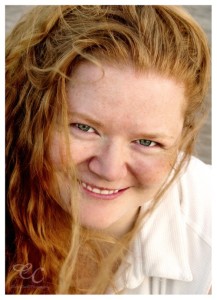Love doesn’t always mean romance.
Let me say it again.
Love does not only mean romance.
When I was a kid, I didn’t like the way so many movies and books portrayed romantic love as the ideal be-all and end-all of human existence. I wasn’t interested in romantic love; if anything, I was kind of disgusted by it. I remember feeling disappointed that there were so few heroines who would turn down romantic love in favour of remaining free and unattached, able to take off on another exiting adventure with no need to give notice to a boyfriend or husband. I remember the medieval festival in school, where I was the only girl who chose to be a knight instead of a princess (even though everyone was given the choice between knight and royal), and how I wanted nothing to do with the passive role where traditional romance made the woman into a prize to be won.
I decided that I was going to tell stories about characters I wanted to be. Stories without mushy stuff. Stories without love.
Only that wasn’t what actually happened.
As it turned out, my characters did experience love, even if they weren’t big on romance. Most of them had friends. Some of them had children, adopted or biological. Some of them cared for parents or grandparents or other family members. The most devoted warrior cared for her comrades and her country. The most daring adventurer cherished her belief in knowledge and discovery, and risked her life for that belief. The most dashing pilot loved his aircraft like a child. These characters might not have experienced romantic love, but they felt love all the same.
A character who doesn’t love anything or anyone rarely cares about anything. Love is the strongest form of caring that there is, and strong emotions mean high stakes and dramatic potential. Who wants to read about a character who feels no passion, experiences no attachment, has nothing to lose, and can’t summon any feelings about it? An utterly apathetic character is hard for readers to be interested in, because if the character himself cares about nothing, why should we care about him?
So let your characters love. Let them develop friendships. Let them have families, if the story allows for it. Let them care passionately about a cause. Let them believe in something: a goal, a religion, a duty, another person.
What happens when a character is torn between two things they love? This need not be a romantic love triangle. What if a character has to choose between tending a sick relative and following their dreams? Between their religion and their new friends? Between their two children? Between serving their country and raising their family? These conflicts can create all kinds of tension without involving romance.
Sometimes I think it’s a little ironic that I’ve actually written some romance stories. But even when I’m writing romantic elements in stories, I try to stay away from that old, abhorred idea that “falling in love” meant a heroine giving up her life of adventure for the sake of a man.
Sometimes romantic love means a bittersweet annual liason between a pacifist doctor and a female revolutionary.
Sometimes romantic love means the dashing gentleman pilot and the young man who fixes his airplane falling in love with one another.
Sometimes romantic love means sacrificing everything to save your partner…and failing, and your story is about what you do after that.
Sometimes romantic love means a turncoat and a pirate setting off together to found a new colony in the depths of uncharted space.
Romantic love is appealing to many readers. It’s also an important part of many people’s lives. These are only two reasons why so many stories contain romantic elements, and why romance as a genre is so successful.
I also, though, want to remember the readers who have been burned by romantic love, and want a story about a character who picks himself up and learns to live again. I want to remember the readers who don’t experience romantic attraction and who are looking for characters who represent them and speak to them. I want to remember the readers who, like me, are tired of forumlas and stereotypes and narrow definitions of what romance can (and by implication, should) be.
So let your characters love. Let them love strongly and deeply: family, friends, hobbies, careers, beliefs, and ideas. Let the things they love create conflict for them. If they experience romantic love, let it be as challenging and complex as any other form of human attachment.
Let love in fiction represent the multi-faceted presence of love in real people’s lives.


